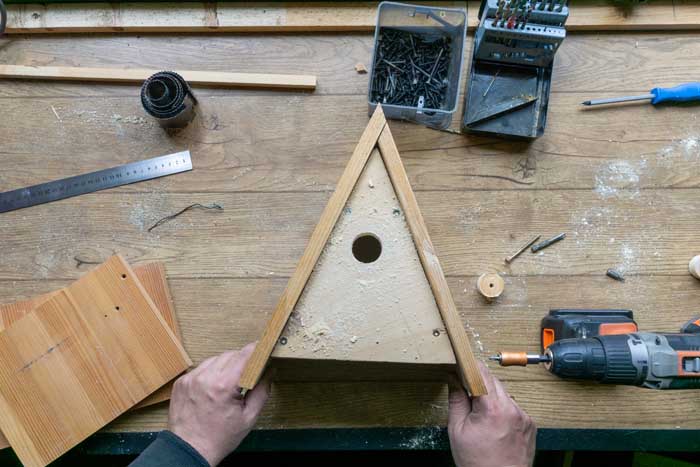Prioritizing Customers
By Joe Tito
At the WHMA conference in Tucson this past February, I ran into Scott Morris of Marsh Electronic’s/MarVac Assemblies division. He was getting ready to host a roundtable discussion entitled, Qualifying & Quantifying New Opportunities. The purpose of the discussion was to exchange ways to prioritize new opportunities and juggle existing customers in these troubling times of supply chain issues andpersonnel shortages. This is a not new problem for MarVac, and it’s unlikely that it’s new for most companies. But activities of the last two years have really brought the issue to the forefront.
Scott discussed the early days of MarVac and how it has led to some of their current challenges. In those early days, they grew the company by taking orders for assemblies that other companies did not want to build. “Heck, we probably would have built bird houses if someone had asked us — we had lumber, we had nails, we had hammers…” he joked. “The same thing that got us here is actually hampering our growth.” Scott confirmed this issue is currently front and center at MarVac.
I arranged a conversation with Scott and Steve Banovich, Manager of Mar-Vac, after the show to discuss some of the ways they are dealing with the constraints. “The goal is not to take anything away from our top 25 customers,” Scott said. If you build a $1000 assembly for a $1000 a year customer, or if you build that same assembly for a $4 million a year a customer, it takes the same amount of time and resources. And once you accept that order, you are morally, ethically and somewhat legally bound to take it,” he asserted. As such, MarVac is taking a more critical look for better opportunities that align with their core competencies. “If you invite the wrong people to the wedding, eventually somebody is gonna step on the brides dress,” Scott analogized.
MarVac is trying to create a better sales funnel/filter so the opportunities that come in fit their overall strategy for growth. They are introducing guidelines to their salesforce to help them better define a well aligned opportunity. Scott indicated it can be quite a balancing act, however. There are no hard stops, and they try not to push back too hard. They want to sharpen their focus without undermining their enthusiasm. “We want to look at opportunities that make the most sense for us in allocating our resources. That’s not to say we want to close the spigot off for everyone, we just want to be smarter about how we go forward.”
In order to achieve their goals, MarVac has had to say goodbye to a few customers. “It’s a multi-pronged approach,” Scott described, “and we’ve already invited people to the wedding that we shouldn’t have, so we are setting up some criteria for when that business comes up for quote again.”
Steve realizes that many of their competitors may be slightly ahead of them on this, but their situation as a distributor and manufacturer, requires special handing. “Marsh/MarVac is a lot different and that we are a very sizable distributor (Marsh Electronics) who also has a rapidly growing value-added center (MarVac Assemblies). There’s not too many manufacturers who have our big footprint as a distributor, so that adds to the complexity.”
Larry Manz Director of Sales & Marketing at Insource had chimed in on the original conversation and was also kind enough to share a few minutes on a follow up call. “The last two years have been very difficult. We went from not having enough people, and not sure how orders were going to continue, to realizing the world didn’t burn down, and we were still going to be building things. Orders started quickly pouring in.” he chronicled.
Insource has instituted a capacity utilization plan. They’ve looked at each customer’s utilization over the past two years and have tried to keep them at the same relative percentage. “The only way they can get more business,” Larry mentioned, “is if we find more people, which we are slowly doing.”
Like MarVac, Insource has had to release some customers. “We’ve had to look at how they match our core competencies and, unfortunately, we have had to send some out into the greater good of society to find their next wire harness supplier.”
In making these tough decisions, Insource has had to look at not only how they fit in their strategic growth plan, but also how they contribute to the labor problem (high usage versus relatively low usage). But the main criteria tend to be financial. “Many of these decisions were based on profitability. I think we had three price increases last year, and we didn’t lose a single customer. We thought that was a lever we could pull to filter out some those customers, but they just kept coming,” he instructed.
Larry indicated that, because of Insource’s great track record with quality and OTD, they actually have a list of past customers who wish to be notified when capacity issues improve. “We’re currently adding people to our staff, and whenever we have an opportunity or an opening to slip someone in, I know exactly who I’m going to start calling.”
Let us know what steps you’re taking to combat capacity issues. You can email me at [email protected]. I look forward to hearing from you!
Interesting Side Note
This might be fodder for a future article, but Larry made one final very interesting point. He is hoping the sales skills Insource has perfected over the years will not atrophy during this period of customer selection. I think the mere fact that they are aware of this will help them sidestep that issue in the future.






























































